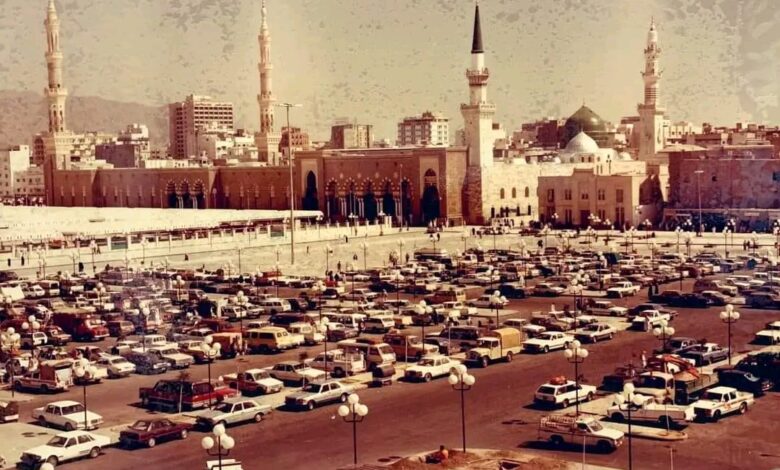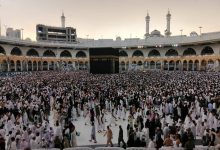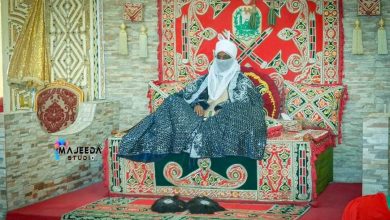the Historical View from the Southwest Side of Masjid-e-Nabwi in Madinah

Exploring the Historical View from the Southwest Side of Masjid-e-Nabwi in Madinah
Introduction: Masjid-e-Nabwi, also known as the Prophet’s Mosque, holds immense religious significance for Muslims around the world. Located in the holy city of Madinah, Saudi Arabia, this mosque is the second holiest site in Islam after the Kaaba in Mecca. Over the centuries, Masjid-e-Nabwi has undergone several expansions and renovations to accommodate the increasing number of worshippers. In this blog post, we will take a historical journey back in time to explore the southwest side of Masjid-e-Nabwi before the extensive expansion launched by King Fahd in 1985.
- The Historical Significance: Dating back to the time of the Prophet Muhammad, the original mosque was a simple rectangular structure with a palm trunk roof. It served as the central hub for religious and community activities in Madinah. The southwest side of the mosque held particular significance as it was adjacent to the Prophet’s house, where he resided with his family.
- Architectural Features: The pre-expansion Masjid-e-Nabwi showcased traditional Islamic architecture. The southwest side had an open courtyard known as the Rawdah or Riyad al-Jannah (Garden of Paradise). This area held special importance for worshippers as it was believed to be a blessed spot where prayers are readily accepted.
The Rawdah was demarcated by low walls and adorned with date palm trees, which provided shade for the worshippers. Pilgrims would eagerly flock to this section to offer prayers and seek blessings. The courtyard was known for its serene atmosphere and spiritual ambiance.
- The Original Minbar: Before the expansion, the southwest side of Masjid-e-Nabwi was home to the original minbar (pulpit) used by the Prophet Muhammad. The minbar was a raised platform from which the Prophet would deliver sermons and address the community. It held immense historical and religious significance and was a focal point for worshippers.
- Surrounding Area: The southwest side of the mosque was surrounded by narrow streets and alleys that formed the bustling neighborhood of Madinah. Traditional houses, shops, and markets characterized the area, reflecting the vibrant social fabric of the city. This neighborhood housed the residences of the Prophet’s companions, creating a close-knit community centered around the mosque.
- Pre-Expansion Experience: Visiting the southwest side of Masjid-e-Nabwi in its pre-expansion state offered a unique spiritual experience. Worshippers would immerse themselves in the historical ambiance, connect with the Prophet’s legacy, and feel the spiritual energy resonating throughout the mosque. The intimate setting fostered a profound sense of closeness to the Prophet and his teachings.
The southwest side of Masjid-e-Nabwi in Madinah held deep historical and religious significance before the extensive expansion undertaken by King Fahd in 1985. The open courtyard of the Rawdah, the original minbar, and the surrounding neighborhood all contributed to the rich cultural heritage of the area. Exploring this historical view offers us a glimpse into the profound spirituality and vibrant community life that characterized Masjid-e-Nabwi in its earlier days. While the mosque has since undergone remarkable transformations, the memories and importance of its past remain deeply ingrained in the hearts of Muslims worldwide.
Title: Unveiling the Historical Significance of the Southwest Side of Masjid-e-Nabwi in Madinah
Introduction: Masjid-e-Nabwi, revered as the Prophet’s Mosque, holds a special place in the hearts of Muslims worldwide. Situated in the sacred city of Madinah, Saudi Arabia, this mosque has witnessed centuries of Islamic history. In this blog post, we will delve into the historical significance of the southwest side of Masjid-e-Nabwi, which was adjacent to the Prophet Muhammad’s residence and served as the central hub for religious and community activities during his time.
- The Original Structure: In the early days, the mosque was a modest rectangular building with a roof made from palm trunks. It symbolized simplicity and humility, aligning with the Prophet Muhammad’s teachings. The southwest side of the mosque, in close proximity to the Prophet’s house, played a crucial role in fostering a strong sense of community and spirituality.
- Proximity to the Prophet’s House: The southwest side of Masjid-e-Nabwi gained immense significance due to its adjacency to the residence of the Prophet Muhammad and his family. This proximity created a direct link between the mosque and the household of the Prophet, making it a central gathering place for the community. It allowed people to witness the daily activities of the Prophet and seek his guidance and blessings.
- Communal Activities: The southwest side of the mosque was the epicenter of various communal activities. The Prophet Muhammad conducted his daily prayers, sermons, and gatherings in this area, leading to an outpouring of spirituality and religious teachings. Muslims would congregate here to listen to the Prophet’s words, seek his counsel, and participate in religious ceremonies and celebrations.
- Social Interactions: The southwest side of Masjid-e-Nabwi served as a vibrant meeting place for Muslims from all walks of life. People would gather to discuss religious matters, seek knowledge, engage in charitable endeavors, and forge strong bonds of brotherhood and sisterhood. The mosque became a focal point for social interactions, strengthening the sense of community and unity among the believers.
- Spiritual Significance: Being in close proximity to the Prophet’s residence, the southwest side of Masjid-e-Nabwi held a unique spiritual aura. Worshippers believed that offering prayers in this area held special blessings and rewards. It was regarded as a sacred space, enhancing the spiritual experience and connection with the Prophet Muhammad.
Conclusion: The southwest side of Masjid-e-Nabwi in its original form played a pivotal role in the early Islamic community. It was not only a place of worship but also a center for social and communal activities. Adjacent to the Prophet’s house, this area fostered a strong sense of community, enabling Muslims to connect with the Prophet, seek his guidance, and engage in religious and social interactions. Understanding the historical significance of this area allows us to appreciate the profound impact it had on the development of Islam and the lives of its followers.
Title: The Humble Origins: Southwest Side of Masjid-e-Nabwi in the Early Days
Introduction: Masjid-e-Nabwi, known as the Prophet’s Mosque, holds deep historical and religious significance for Muslims worldwide. In its early days, this sacred mosque, situated in Madinah, Saudi Arabia, reflected the teachings of Prophet Muhammad through its simple and humble structure. In this blog post, we will explore the southwest side of Masjid-e-Nabwi, which, in close proximity to the Prophet’s house, played a vital role in fostering a strong sense of community and spirituality.
- The Modest Architecture: During the time of the Prophet Muhammad, the original structure of Masjid-e-Nabwi was unassuming and modest. It was a rectangular building with a roof made from palm trunks, reflecting the emphasis on simplicity and humility in Islamic teachings. This architectural style resonated with the Prophet’s own lifestyle and encouraged worshippers to focus on the essence of faith rather than material grandeur.
- Proximity to the Prophet’s House: The southwest side of Masjid-e-Nabwi held particular significance due to its adjacency to the Prophet’s house, where he resided with his family. This proximity created a special bond between the mosque and the household of the Prophet, establishing a strong spiritual connection. The community members would witness the Prophet’s daily activities, observe his character, and seek guidance directly from him.
- Community Spirit: The southwest side of the mosque became a central gathering place for the Muslim community. It provided an intimate setting for worshippers to come together, share knowledge, and engage in acts of worship. The proximity to the Prophet’s house enhanced the sense of community, fostering a spirit of unity, brotherhood, and sisterhood among the believers.
- Spiritual Atmosphere: The humble architecture and the proximity to the Prophet’s house created a unique spiritual atmosphere on the southwest side of Masjid-e-Nabwi. Worshippers felt a profound sense of awe and reverence as they offered prayers in this sacred space. Being in such close proximity to the Prophet’s residence amplified the spiritual connection, allowing individuals to experience a deeper sense of devotion and tranquility.
- Lessons of Simplicity and Humility: The modesty of the early mosque’s structure and the proximity to the Prophet’s house conveyed powerful lessons of simplicity and humility. This aspect of the southwest side of Masjid-e-Nabwi served as a reminder for worshippers to prioritize the inner aspects of faith over outward displays. It emphasized the importance of sincerity and humility in one’s relationship with Allah and fellow human beings.
Conclusion: The southwest side of Masjid-e-Nabwi, with its modest architecture and proximity to the Prophet’s house, played a significant role in shaping the early Muslim community. It promoted a sense of unity, community spirit, and spiritual devotion among worshippers. This area taught valuable lessons of simplicity and humility, which remain integral to Islamic teachings to this day. Understanding the historical significance of this part of the mosque allows us to appreciate the foundational values and principles upon which Masjid-e-Nabwi was built, and the profound impact it had on the development of Islamic civilization.
arewanahiya.com







